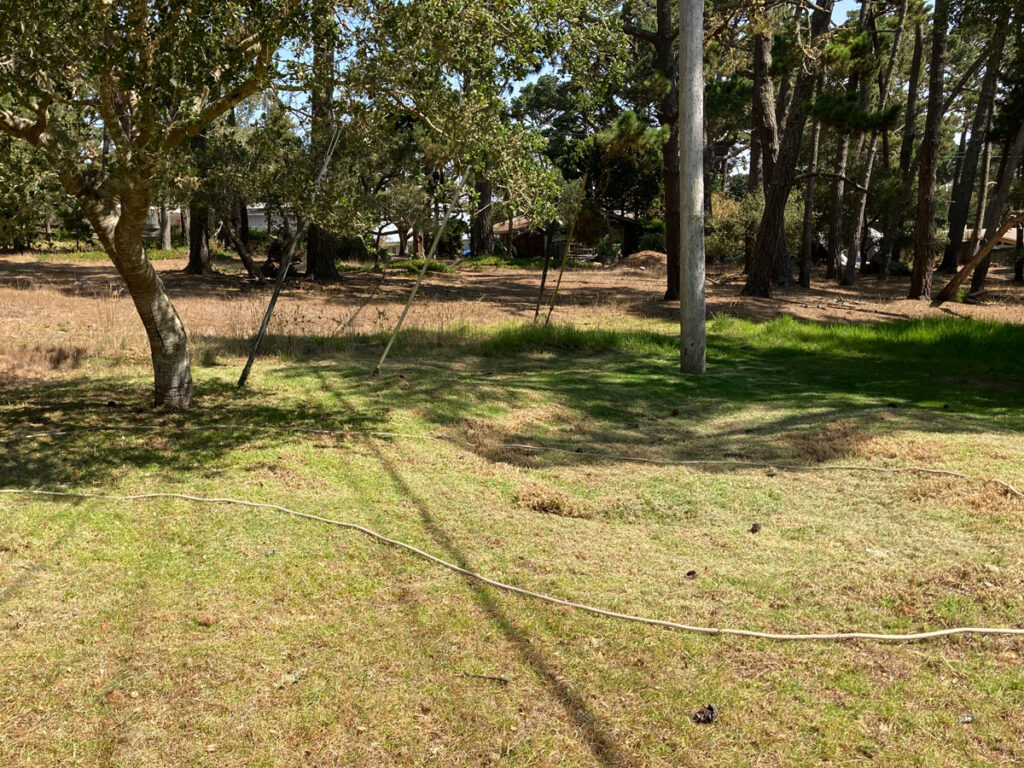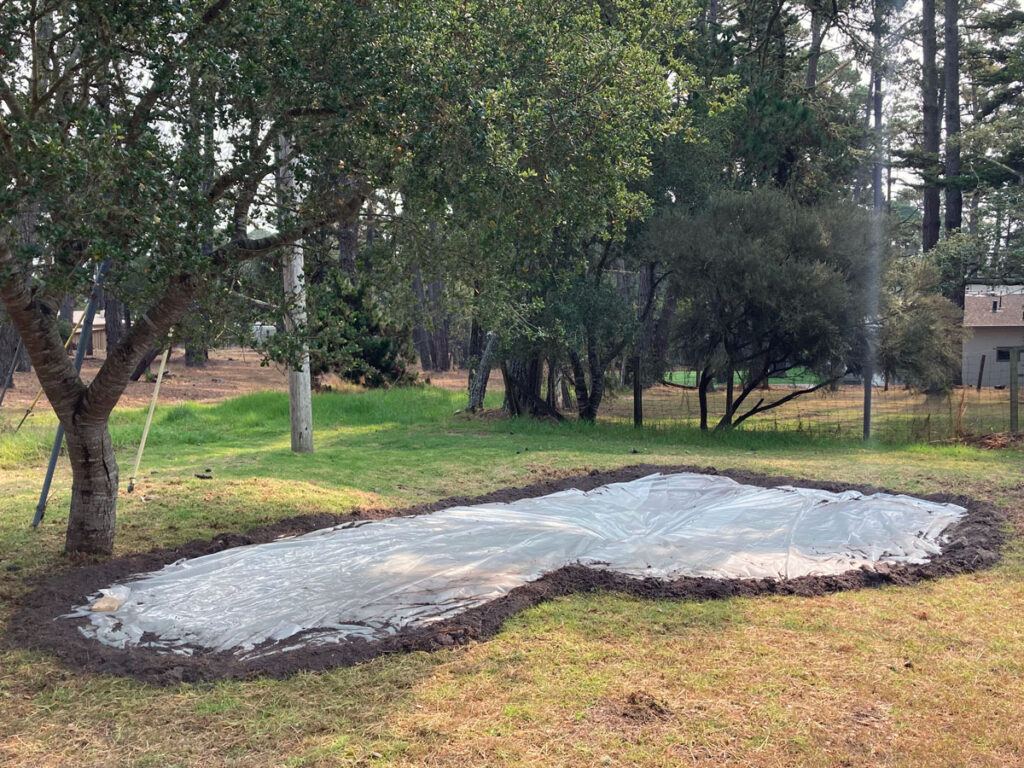Drainage low spot provides opportunity
A landscape plan must bend to the conditions found at the site. In this garden there were numerous challenges beginning with influence of both the shade and roots of Monterey pines, the cool summer climate of Pebble Beach and the clay soils with poor drainage.
The site also had a few natural seeps that added additional moisture year round. A drainage pipe directed water away from the house and down the slope to the low part of the property where standing water could be observed during the rainy season. Could this be a great place to put a rain garden?
The plan objective included
- removing the invasive Bermuda grass that was fueled by year round groundwater
- native and ornamental plants that could take a wet foot year round
- plants that deer would not be attracted to
- plants tolerant of shade conditions—light to deep
- plants that could be submerged during heavier rain events
- plants that would be able to naturalize to the conditions of the area
Removing the Bermuda grass required muscle. Solarization is generally a great way to burn away persistent weeds in warmer climates. If you have warm summers and weedy patches, do a little web search on how best to apply this process.
An early attempt to solarize the grass by covering with clear plastic during the “summer” proved ineffective in this climate for the most part. The season never got enough warm days with direct sun to burn the grass and roots. If anything the grass grew lush with the increased warmth under the plastic. So it was back to tedious mechanical removal by hand using shovels. This took more than several man hours to clear the area for the fall planting. Special shout out to Julio and his uncle from Valdez Gardening for their tireless and professional services!


Around the outer rim—where the slope was higher—plants were chosen for tolerance to seasonal moist soils but not complete submersion.
The Plant list
This list included:
- Arctostaphylos ‘Carmel Sur’ manzanita
- Pacific Coast Iris
- Ribes speciosum
- Salvia spathecea
- Senecio ‘Angels Wings’
- Shasta ‘Crazy Daizy’
- Vaccinium ovatum
Within the deepest part of the drainage area plants were chosen for their ability to be submerged during the wet winter season. This turned out to be prophetic as the 2022-23 winter season was one of the wettest in California written history!
This list included:
- Chondrapetalum elephantinum
- Juncus patens ‘Blue Elk’
- Muhlenbergia rigens
Cages were used to cover the larger shrubs to minimize tugging and tasting by deer until the new roots got established. The deer left this planting area alone and there has been little evidence of browsing since installation.
A year later
With a very wet winter most of the drainage basin became filled with water; about 2 feet deep after a down pour! The plants that were chosen for underwater submersion came through with flying colors and looked great months after their 2022-23 baptism.
The plants chosen for seasonal soggy feet also did well with the exception of the ‘Angel Wings’ Senecio. For the ‘Angel Wings’ the combination of shade and poor drainage caused them to struggle even though they endured. These plants have since been moved to a mound in the sun that provides better drainage and they look much happier. We planted white yarrow in its place and that plant has been spreading out rapidly. The yarrow has the added bonus of out-competing the returning persistent Bermuda grass that threatens to grow back into the area.
With this success I am contemplating adding California wild rose and some Woodwardia fimbriata below the oak tree. This would be a good niche for these plants to take advantage of the free ground water.





